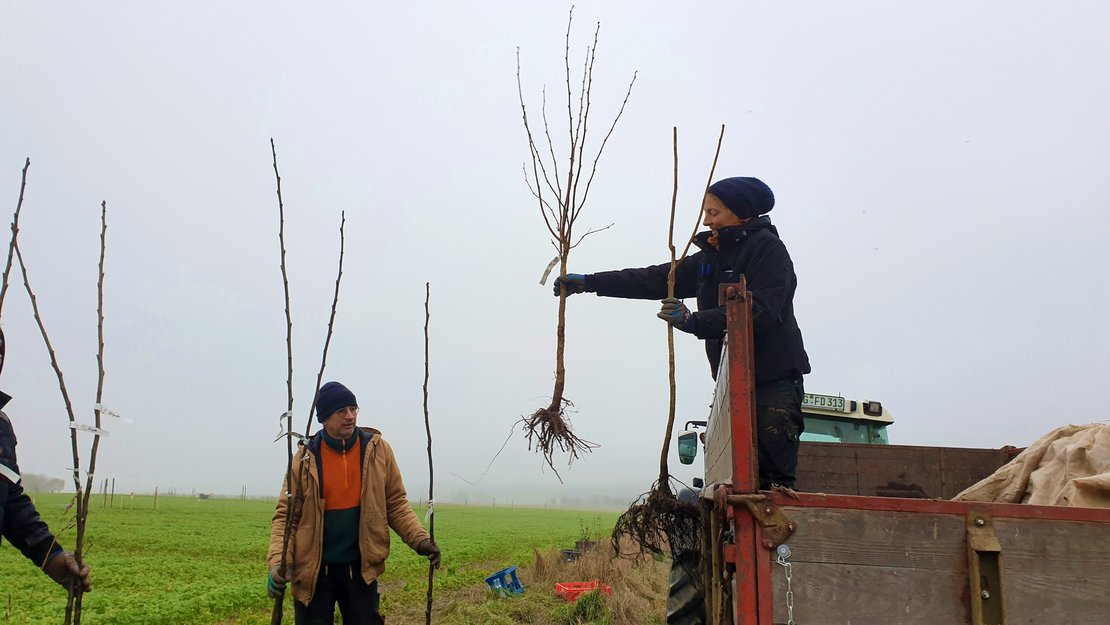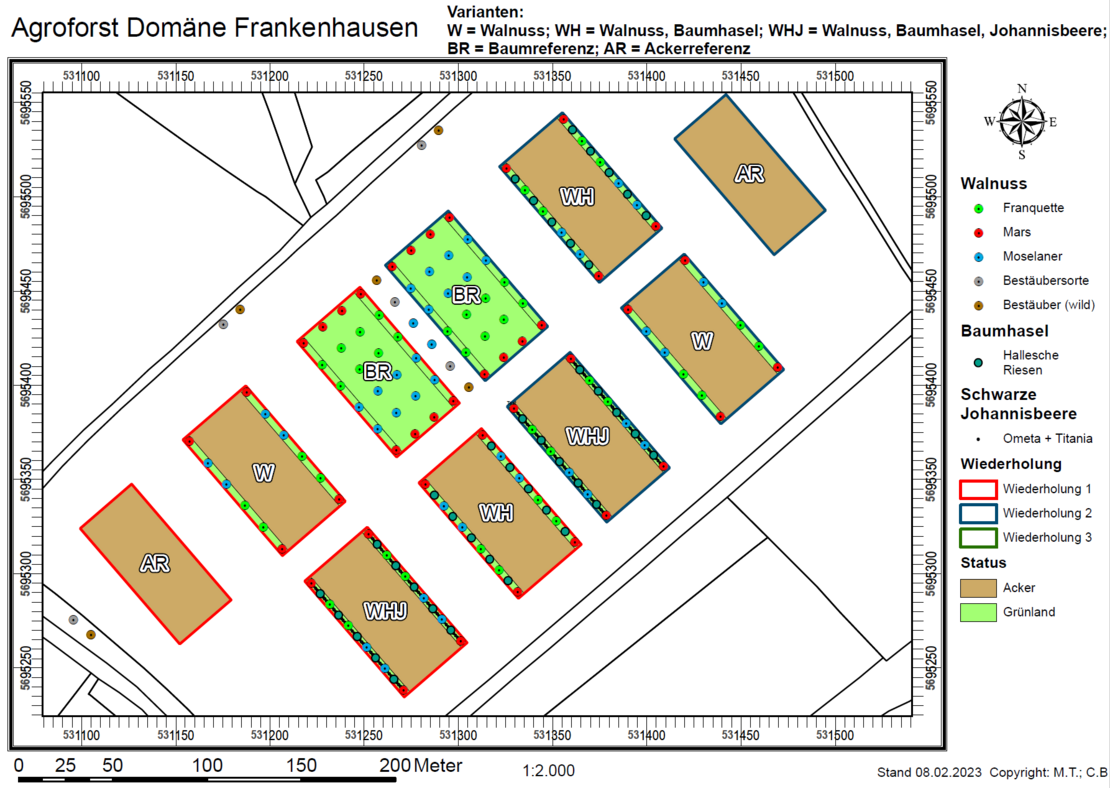Agroforestry in Frankenhausen
The content on this page was translated automatically.
The potential impact of agroforestry systems (AFS) on climate change adaptation, climate protection and biodiversity enhancement has been proven internationally in many studies. However, the site conditions are of decisive importance. In the temperate climate zone, the cultivation of valuable and fruit trees in AFS has hardly been researched to date. However, there is great interest in practice and research in the investigation of the ecological and economic potential of such new, multifunctional branches.
 Image: Miriam Athmann
Image: Miriam AthmannThe establishment of an AFS involves investments, so interested farmers need knowledge from research and practice in order to be able to assess the long-term effects on yields, soil and the environment and thus the ecological and economic development of their own farm.
For this reason, an AFS experiment with arable crops, walnut(Juglans regia L.), hazel(Corylus colurna L.) and blackcurrant(Ribes nigrum L.) was set up in November 2022 as part of the "Sustainable land use - agroforestry" project. The teaching, research and transfer center for organic farming Hessische Staatsdomäne Frankenhausen with a parabrown soil of loess over Röt was selected as the location. The experiment is intended to investigate the following questions:
- Ecological and economic effects of AFS compared to arable farming and plantation farming: walnut and arable crops in alley cropping compared to arable crops without the influence of woody plants and walnut in plantation farming
- Ecological and economic effects of increasing diversity in AFS: alley cropping with walnut compared to alley cropping with walnut and hazelnut as well as with walnut, hazel and currant.
Both questions are investigated for two different walnut varieties (cv. Moselaner 120 and cv. Franquette).
The experiment was established as a randomized block design with a total of three (2+1) field replicates on two spatially close plots (10 + 7 ha). The plot size is 3,200 m² (40x80 m) with 36 m wide arable strips and 4 m wide tree strips as well as 15 m distance between the walnut trees in the row in the alley cropping variants. In the plantation variant, the distance between individual trees is 15 m in the row and 13 m between the rows. Tree hazel trees are spaced 7.5 m apart between the walnut trees, currants with 3 plants each at 7.5 m between walnut and tree hazel. The tree strips and the grassland in the plantation variant are sown with a smooth oat meadow mixture. On the arable land, a normal crop rotation of cereals and legume-grass mixtures is planned. The experiment is largely managed organically without plowing. The figure shows the trial plan for the first two field replicates on the 10 ha "Obere Kiebitzbreite" field.

